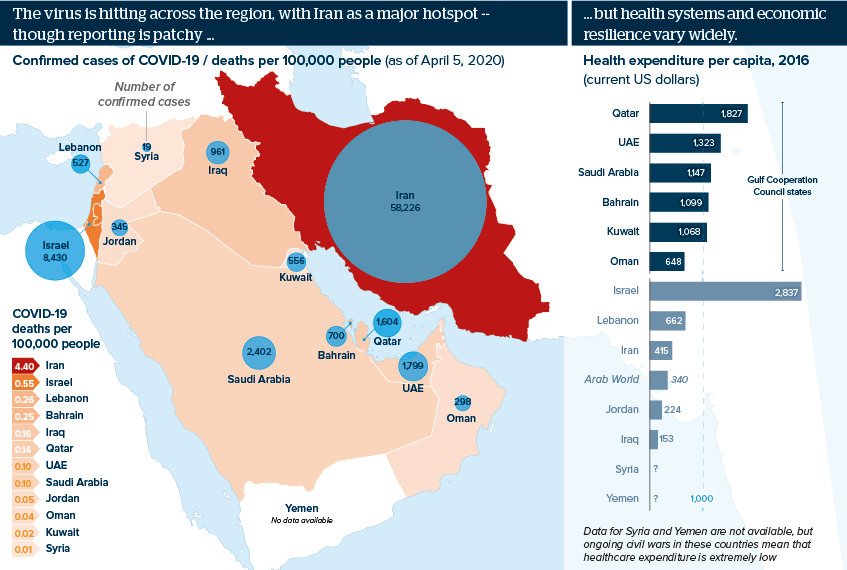Virus fallout will mirror Middle East economic divide
Beyond the Gulf and Israel, resilience is sapped by poor healthcare, conflict, political vacuums and economic crises
Source: World Development Indicators, UNHCR, Johns Hopkins University Center for Systems Science and Engineering
Outlook
COVID-19 hit the region first and hardest in Iran, but it is spreading to every country. Syria and Yemen, as active conflict zones, have less capacity -- or willingness -- to test and report. However, they are particularly vulnerable, with many suffering from poverty and malnutrition.
The Gulf countries generally have effective health systems, a high coercive capacity to impose restrictions and fiscal reserves to meet the crisis -- but relatively poor Oman could still struggle, especially as oil slumps.
Other Arab states such as Jordan were already facing new economic pressures, and will also see curtailed Gulf aid.
Impacts
- Lebanon and Iraq since 2019 have plunged into protest-driven political and economic crises, which complicate the COVID response.
- US sanctions on and poor leadership in Tehran are combining to exacerbate the impact of an explosion of infections.
- Close-packed refugee camps in Syria and nearby countries will struggle to contain the virus through social distancing and hand-washing.
- Israel’s global links and specific at-risk groups have boosted cases, but high health spending and effective controls should limit deaths.
